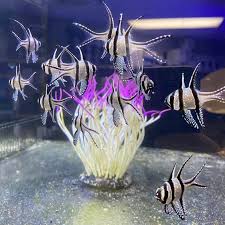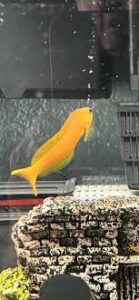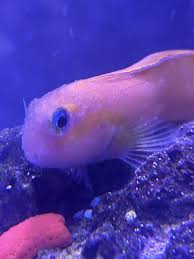Dragons in Chinese Ancestral Worship Rituals

The dragon holds a central place in Chinese culture, symbolizing power, wisdom, and divine protection. Beyond its role in mythology, architecture, and festivals, the dragon also plays a significant part in ancestral worship, a practice deeply embedded in Chinese traditions. In many families, dragons are incorporated into ancestral altars, rituals, and symbolic offerings to honor deceased relatives and maintain spiritual harmony.
This article explores the presence of dragons in ancestral worship in China, examining their symbolic meanings, role in rituals, artistic representations, and their continued influence in modern times.
I. The Cultural and Spiritual Significance of Dragons in Ancestral Worship
1. The Connection Between Dragons and Ancestral Spirits
In Chinese belief, ancestors hold a sacred place in family life, acting as spiritual guardians who provide guidance and blessings to their descendants. Worshiping ancestors is not just a ritual but a way to maintain a connection between the living and the dead.
Dragons are associated with celestial energy (qi, 气) and are believed to bridge the gap between heaven and earth. In ancestral worship, dragons are seen as protectors of family lineage, ensuring that descendants remain prosperous, healthy, and in harmony with cosmic forces.
2. The Role of Dragons in Feng Shui and Ancestral Worship
Traditional Chinese Feng Shui (风水) considers the dragon an auspicious symbol that brings balance and protection to homes and ancestral shrines. The Green Dragon (青龙, Qīnglóng), a key Feng Shui guardian, represents the east and is often positioned on the left side of an ancestral altar. This positioning ensures that the spirit of the ancestors is guarded and that positive energy flows continuously.
Feng Shui masters often recommend placing dragon imagery in ancestral halls, tombstones, or worship areas to safeguard the family’s spiritual lineage and invite heavenly blessings.
II. Dragon Symbolism in Ancestral Worship Rituals
1. Dragons in Ancestral Altars and Temples
Ancestral altars (祖坛, zǔtán) and temples dedicated to family ancestors often incorporate dragon motifs in the following ways:
- Altar Decorations: Wooden carvings of dragons appear on ancestral altars, symbolizing the strength of family heritage.
- Incense Burners: Many incense burners in ancestral halls feature dragon designs, signifying the ascent of prayers to the heavens.
- Ancestral Tablets (祖牌, zǔpái): These wooden tablets, inscribed with the names of ancestors, sometimes feature dragon carvings to enhance spiritual protection.
2. Dragon-Inspired Offerings to Ancestors
During ancestral worship ceremonies, descendants present offerings such as food, wine, and symbolic items. Some families include dragon-shaped pastries or candles, emphasizing the dragon’s role in blessing their lineage.
In grand ancestral worship events, such as the Qingming Festival (清明节, Qīngmíngjié), dragon-themed lanterns are often lit near family graves to illuminate the spirits’ path and guide them back to the realm of the ancestors.
3. Dragon Dances in Ancestral Festivals
In some regions of China, ancestral worship ceremonies incorporate dragon dances as a form of respect and celebration. These performances are meant to summon the spirit of the dragon to protect the community’s ancestors and bless future generations with prosperity.
Dragon dances are particularly common in:
- Clan gatherings during Qingming Festival
- Temple rituals honoring ancestral deities
- New Year celebrations dedicated to family ancestors
The movement of the dragon is believed to awaken ancestral spirits, ensuring their continued presence and guidance in the lives of their descendants.
III. Dragons in Chinese Ancestral Tombs and Burial Sites
1. Dragon Motifs in Imperial and Family Tombs
Dragons have been a key element in the design of imperial mausoleums and family burial sites, reinforcing the belief that they guard ancestral spirits. The Ming Tombs (明十三陵, Míng Shísān Líng) and Qing Imperial Tombs feature grand dragon-carved stone gates, symbolizing the emperor’s divine protection even in the afterlife.
For common families, dragon carvings on gravestones indicate:
- Respect for powerful ancestors
- The desire for protection from negative forces
- A connection to celestial energy that ensures a smooth transition into the afterlife
2. Dragon Symbols in Tomb Feng Shui
Chinese burial customs often follow Feng Shui principles, and dragons play a vital role in determining auspicious burial locations. Many families seek to place tombs in areas where dragon veins (龙脉, lóngmài)—natural energy currents believed to flow through the land—are strong.
The most favorable tomb locations are:
- Near mountains shaped like dragons (symbolizing stability and power)
- By rivers or lakes (where dragons are believed to reside and bring good fortune)
- Facing the east (aligned with the Green Dragon for prosperity and protection)
In ancient China, Feng Shui masters were often consulted to ensure that ancestral graves aligned with these principles, reinforcing the idea that dragons guide and protect the spirits of the deceased.
IV. The Influence of Dragons in Modern Ancestral Worship Practices
1. Continuation of Dragon Symbolism in Modern Worship
Although many Chinese families have modernized their ancestral worship practices, the use of dragon imagery remains prevalent. Today, people honor their ancestors by:
- Lighting dragon-patterned candles and incense sticks
- Using dragon-adorned altars in home temples
- Carving dragon designs on contemporary gravestones
In urban temples and family homes, digital altars with virtual dragon decorations have become a modern way to continue the tradition while adapting to technological advancements.
2. Dragon Symbolism in Ancestral Festivals Today
Major festivals like Qingming Festival and Ghost Festival still incorporate dragon imagery, particularly in:
- Dragon-themed ancestral prayers broadcast online
- Virtual dragon dances performed as part of online memorial services
- Dragon carvings on incense burners used in family rituals
These modern adaptations show that even as society evolves, the spiritual connection between dragons and ancestral worship remains deeply rooted in Chinese traditions.
Conclusion: The Everlasting Presence of Dragons in Ancestral Worship
Dragons have been an integral part of ancestral worship rituals in China for centuries, symbolizing spiritual guidance, celestial power, and family prosperity. From ancient tomb carvings to modern digital altars, dragon motifs continue to bridge the worlds of the living and the dead.
Through altar decorations, ceremonial offerings, and tomb designs, dragons ensure that ancestral spirits remain honored and revered across generations. Their enduring presence in ancestral worship reflects the deep respect that Chinese culture holds for family heritage, making them timeless guardians of both the past and the future.









